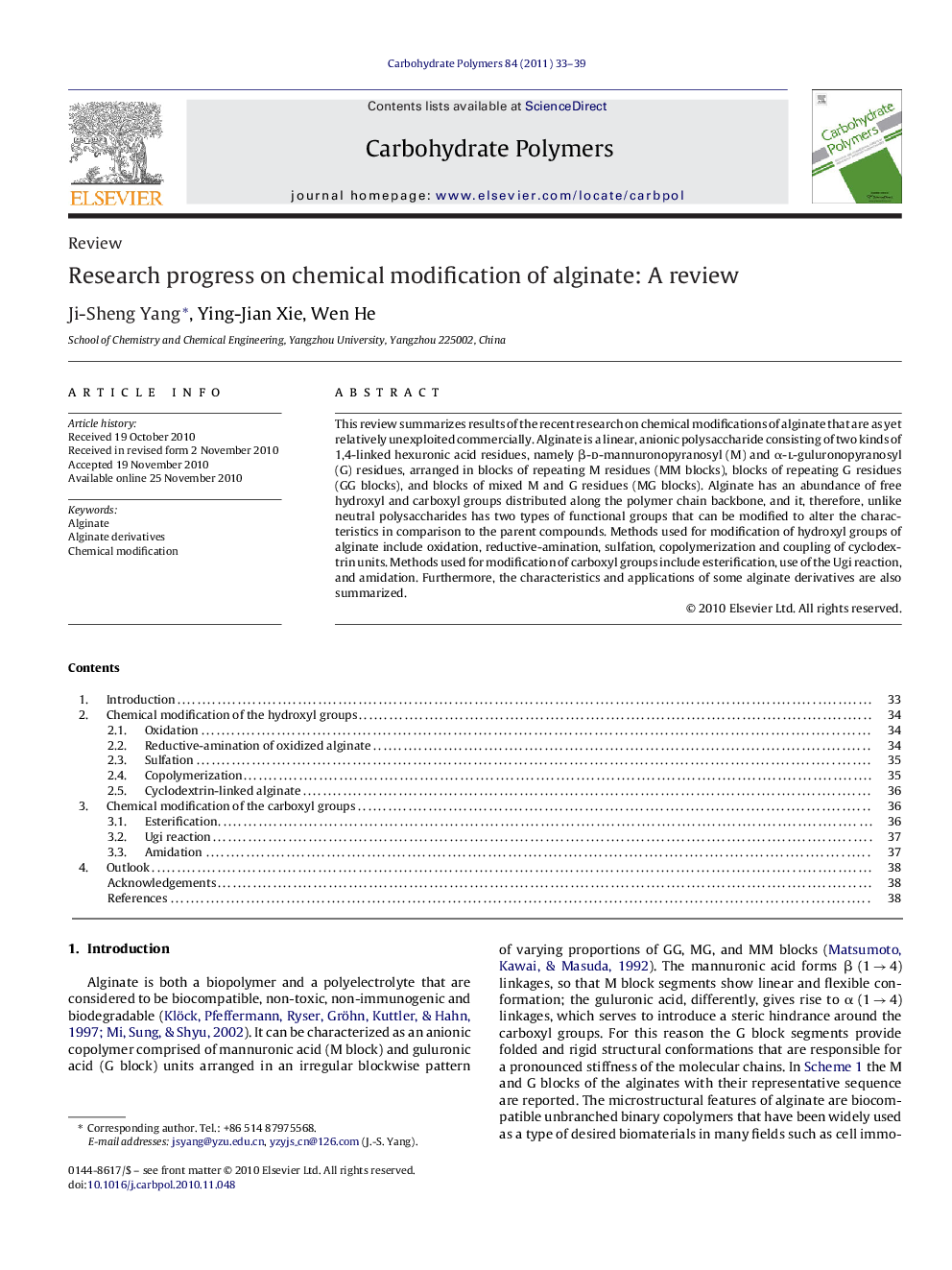| Article ID | Journal | Published Year | Pages | File Type |
|---|---|---|---|---|
| 10604600 | Carbohydrate Polymers | 2011 | 7 Pages |
Abstract
This review summarizes results of the recent research on chemical modifications of alginate that are as yet relatively unexploited commercially. Alginate is a linear, anionic polysaccharide consisting of two kinds of 1,4-linked hexuronic acid residues, namely β-d-mannuronopyranosyl (M) and α-l-guluronopyranosyl (G) residues, arranged in blocks of repeating M residues (MM blocks), blocks of repeating G residues (GG blocks), and blocks of mixed M and G residues (MG blocks). Alginate has an abundance of free hydroxyl and carboxyl groups distributed along the polymer chain backbone, and it, therefore, unlike neutral polysaccharides has two types of functional groups that can be modified to alter the characteristics in comparison to the parent compounds. Methods used for modification of hydroxyl groups of alginate include oxidation, reductive-amination, sulfation, copolymerization and coupling of cyclodextrin units. Methods used for modification of carboxyl groups include esterification, use of the Ugi reaction, and amidation. Furthermore, the characteristics and applications of some alginate derivatives are also summarized.
Keywords
Related Topics
Physical Sciences and Engineering
Chemistry
Organic Chemistry
Authors
Ji-Sheng Yang, Ying-Jian Xie, Wen He,
